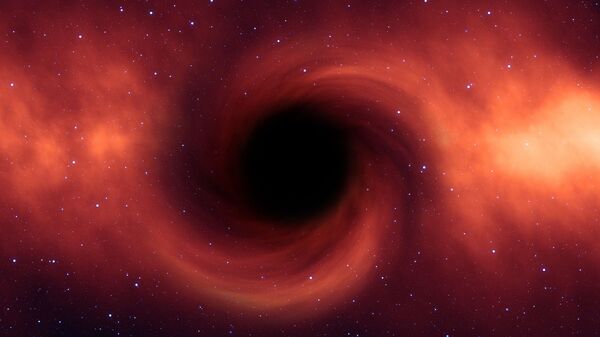The study results were published in the Physical Review E journal.
The analysis of space objects’ X-ray radiation is one of the most important methods of astrophysics. According to MEPhI researchers, black hole accretion disks, which consist of matter which falls into the hole and is heated to a plasma state, are one of the cosmic sources of strong X-ray radiation.
An international research team involving MEPhI scientists has managed to artificially obtain a small volume of plasma with characteristics identical to that thought found in a black hole accretion disk.
"Astrophysics has long been considered the purview of observers, since it seemed quite difficult to influence the phenomena it studies, and even more so to reproduce them. Our experiment is unique because the parameters of the obtained plasma don’t need to be scaled; they correspond to the actual parameters of the black hole accretion disk of close binary systems of the Cygnus X-1 type," Philipp Korneev, associate professor at the Institute of Laser and Plasma Technologies of MEPhI, noted.
According to scientists, a strong magnetic field, whose induction reaches several thousand Tesla, is the key factor in the formation of X-radiation sources of this type. The experiment was aimed at testing the method for creating such magnetic fields in plasma, developed jointly by scientists at Institute for Laser and Plasma Technologies MEPhI and the CELIA laboratory at Bordeaux University.
"The experiment has demonstrated that our method allows not only the creation of ultrahigh quasi-stationary magnetic fields of record magnitude, but also the simulation of the state of the plasma arising in them with a high density of matter energy and electromagnetic energy, which is in demand in modern laboratory astrophysics," Philipp Korneev said.
According to the researchers, the method is based on the reflection effect of a powerful laser beam along the target’s spiral-shaped inner surface. A rolled-up piece of thin foil several hundred microns in diameter was used as a target. A laser pulse with an energy of about 330 Joules and a duration of one picosecond was almost completely absorbed in the target’s hollow, creating a relativistic plasma and a magnetic field with an induction of more than 2,000 Tesla.
"Due to the fact that a rather powerful laser was focused on the target for such a short time, only 10-12 seconds, the pulse power turned out to be about 20 times higher than the power consumption of the entire energetics of the Earth. As a result, for several picoseconds, plasma formed in a volume on the target, with a temperature of billions of degrees, a density of 1018 particles per cm3 and a frozen-in magnetic field of more than 2,000 Tesla, which is comparable to the plasma parameters in the active region of X-ray sources", Philipp Korneev explained.
The resulting volume of hot, highly magnetised plasma was large enough to have the essential characteristics of a complete astrophysical system, the scientists said. According to the researchers, the geometry of the experiment contributed to that: inside the plasma volume, the magnetic fields were directed towards each other so that magnetic field annihilation took place in the area of contact of the opposing magnetic lines, creating particle streams with speeds close to the speed of light.
The international research team involved scientists from Japan (Osaka University), France (University of Bordeaux), Germany and Russia. The experiment was carried out using the LFEX laser facility at the Institute of Laser Engineering at Osaka University (Japan).




